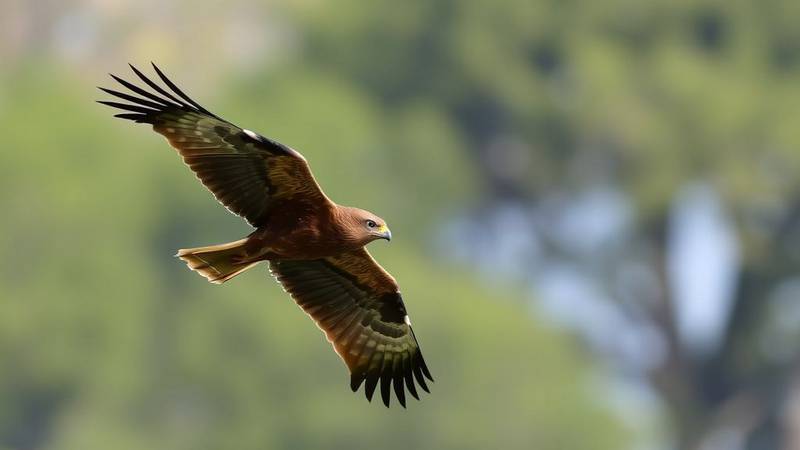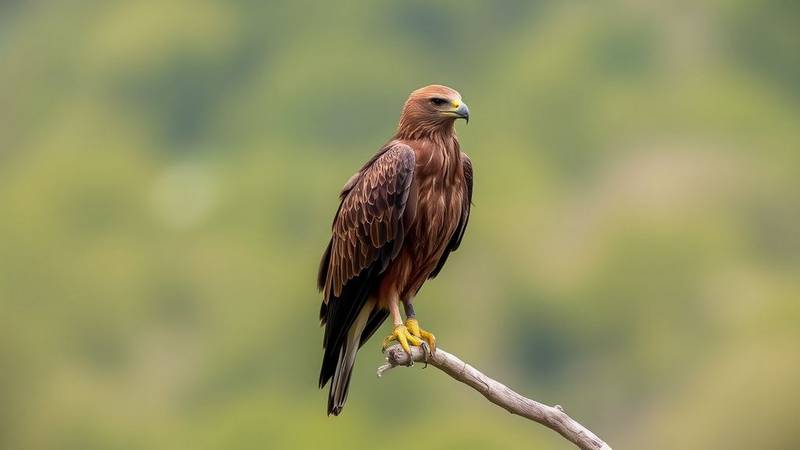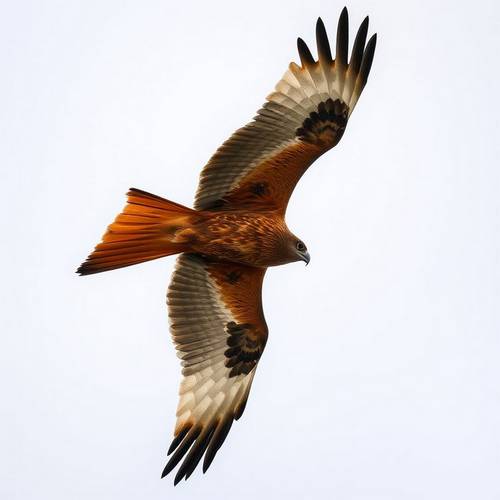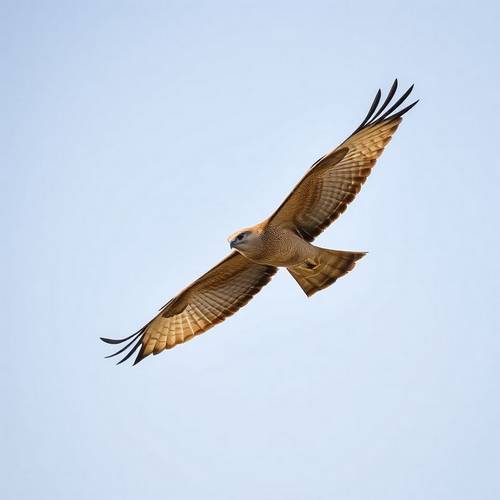Behavior: The Opportunistic Scavenger
The Black Kite is a diurnal raptor with an eclectic and opportunistic behavior. It is primarily a scavenger, playing an essential ecological role as a "cleaner" in the environments it inhabits. Its main food source consists of dead or sick fish that it spots and catches from the surface of rivers, lakes, and ponds. It also feeds on small animal carcasses (rodents, birds), refuse, and waste, and is often observed near landfills.
Although mainly a scavenger, the Black Kite is also a skilled hunter of live prey, including small mammals (voles, mice), reptiles, amphibians, and large insects. It sometimes follows tractors in freshly plowed fields to catch disturbed animals. It can also engage in kleptoparasitism, stealing prey from other raptors or birds, like the Common Buzzard. Similar to other large scavengers such as the African Vulture, it actively participates in removing carrion from its environment.
The Black Kite is a gregarious species, a relatively rare characteristic among raptors. It often breeds in loose colonies and gathers in large roosts before autumn migration. Its breeding season begins upon its return from migration in March-April. The nest, often reused, is built in a large tree, usually at the edge of a forest and near a body of water, and is lined with various materials, including refuse. The female lays 2 to 3 eggs (sometimes 4), incubated for about 30 to 34 days, with the male providing food. The young fledge after 6 to 7 weeks but remain dependent on their parents for about another fortnight.
Habitat and Distribution
The Black Kite is one of the most widespread raptors in the world, with a vast range extending across Europe, Asia, tropical Africa, and parts of Australasia. Populations in temperate zones, including the majority in Europe, are migratory and spend winter in sub-Saharan Africa or Southeast Asia, returning to their breeding grounds by March. Populations in tropical regions are generally sedentary.
Its preferred habitat is varied, but it shows a clear affinity for areas near water: rivers, lakes, ponds, marshes, and wetlands. It nests in wooded or rocky areas, requiring large trees or rocky escarpments for its nests. The Black Kite also adapts well to open agricultural landscapes and can be observed at the edges of cities, where it benefits from landfills as a food source.
Distribution Map
Conservation Status
The Black Kite is currently classified as "Least Concern" (LC) on the IUCN Red List. Unlike its cousin, the Red Kite, its global population is stable and even moderately increasing in some parts of Europe, particularly in France. Its broad diet and ability to adapt to various habitats, including anthropogenic ones, contribute to its resilience.
However, localized threats persist. These include habitat degradation and loss, especially wetlands and riparian forests, which are essential for its nesting and feeding. Secondary poisoning, often linked to the ingestion of poisoned rodents or carrion contaminated with pesticides, remains a major concern. Collisions with vehicles, fences, power lines, and wind turbines also pose dangers, particularly during migrations.
Frequently Asked Questions (FAQ)
What are the main characteristics of the Black Kite?
The Black Kite is known for its dense and predominantly dark brown to chocolate brown plumage. Adults often have a lighter head. Its tail is V-shaped, slightly forked, and it may show a creamy-brown patch under the wing at the primary flight feathers.
Does the Black Kite hunt at night?
No, the Black Kite is primarily a diurnal raptor, hunting and feeding during the day. Although it can be active at dusk, it is not considered a nocturnal hunter.
Why does the Black Kite gather in large groups?
The Black Kite is a gregarious species. It gathers in large groups for migration and to roost together overnight. This can offer better protection against predators and facilitate food searching.
What does the Black Kite eat?
Its diet is very varied and opportunistic. It feeds mainly on dead or sick fish, small carcasses, refuse, and waste. It also hunts small mammals (voles), reptiles, amphibians, and insects.



